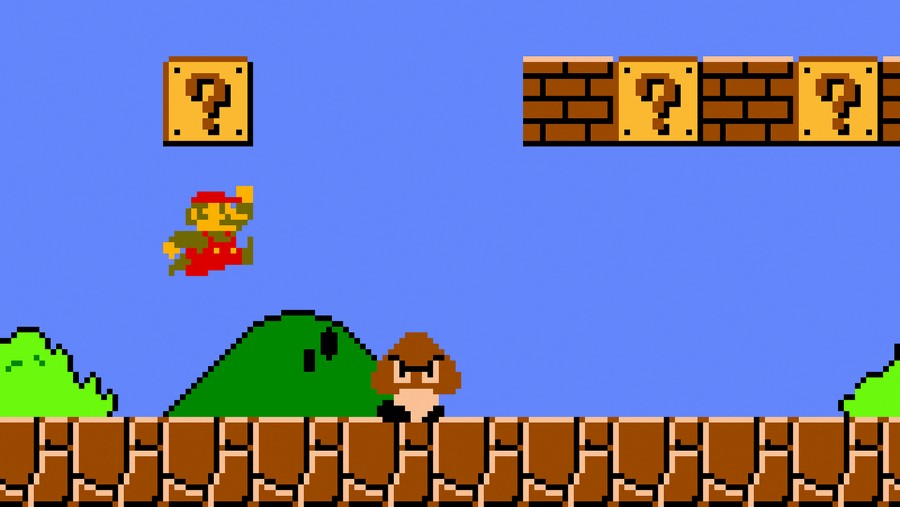As part of the celebrations of its 35th Anniversary, here’s a look back at Super Mario Bros, and its importance in the gaming world today.
The first part of the game to talk about is its accessibility. The first course you play in the game – World 1-1 – was designed to teach new players the basics of 2D platforming and how to play the game. An example of this is when Mario hits his first question block releasing a mushroom. The mushroom comes out, but the pipe blocks it allowing you catch it and find out what it does which makes Mario’s sprite bigger.
This concept also extends to enemies. The first enemy you encounter is a Goomba. This can be simply stomped on, but later you will encounter a Koopa Troopa which will retreat into its shell when jumped on rather than simply die. Rather than pausing the game to explain the rules, the game will let you figure out how to play at your own pace which contributed to Super Mario Bros’ success.
Power-ups were also introduced in this game. You encounter these later on in the level and they become main features in the series and its spin-offs – such as Mario Kart – including the Fire Flower, which Mario uses to throw fireballs. There is also the Super Star which makes Mario invincible for a short amount of time.
Now we go onto Nintendo’s design setup of making games which are easy to learn but difficult to master. This allows many people to get into the game which is also assisted by precise and responsive controls of the directional pad and A and B buttons. It is also said that Nintendo has a “Form Follows Function” approach to designing their games – similarly to the Bauhaus and Modernist design movements – and I am not just talking about Mario. Their games are usually designed around a gameplay gimmick or concept, and they were doing it all the way back then with this gaming setup.
For those who don’t know, video games were generally frowned upon in the early 1980s after the “crash” of 1983. Due to poor quality games – namely an Atari adaptation of E.T. – and the rise of home computers, video games were not popular compared to today. They were a niche art.
Super Mario Bros. helped the industry get out of this drop. One factor of this was that it could only be played on the Nintendo Entertainment System (NES or Famicom in Japan) which was Nintendo’s first home console which brought video games closer to people rather than them having to go out to the Arcade. This means if Super Mario Bros. wasn’t successful, we would not be enjoying video games today! It is cited that it has inspired other video game franchises such as Mario’s 16-bit rival, Sonic the Hedgehog.
Another iconic element of Super Mario Bros. is its music composed by Koji Kondo – who has gone on to create and supervise the music in the Mario and Legend of Zelda Franchises. There is of course the classic 8-bit sound of the main “Overworld” theme which you know is associated with Mario. This set the idea of music being an accompaniment to enhance the video game experience – similarly to movies.
Another factor to Mario’s appeal is the game’s use of colours. The vast majority of the game is very bright and colourful, similar to animated films. This would lead to Mario’s appeal towards younger audiences and carved Nintendo’s identity to general gaming audiences. This still effects Nintendo today, especially compared to their competition of Microsoft and Sony.
The classic 8-bit design for Mario continues to be seen in recent titles such as Super Mario Maker and Super Mario Odyssey because of how classic and nostalgic it is.
For Mario novices, Super Mario Bros is both the biggest selling platforming and Mario game of all time (40.24 million physical copies sold worldwide, 12 million of which was in North America) and was the bestselling game overall for over 20 years after its release. Nintendo ended up beating their own record in 2006 with Wii Sports, but we all know they only got away with that because it came packaged with the Nintendo Wii.
There is no question that Super Mario Bros is a game which has stood the test of time, and will continue to be enjoyed by future generations to come. It will also be remembered as not just important to Nintendo but to the video game industry as a whole. It is Mario creator Shigeru Miyamoto’s masterpiece.
By Stuart McComb
Feature image: TNW

